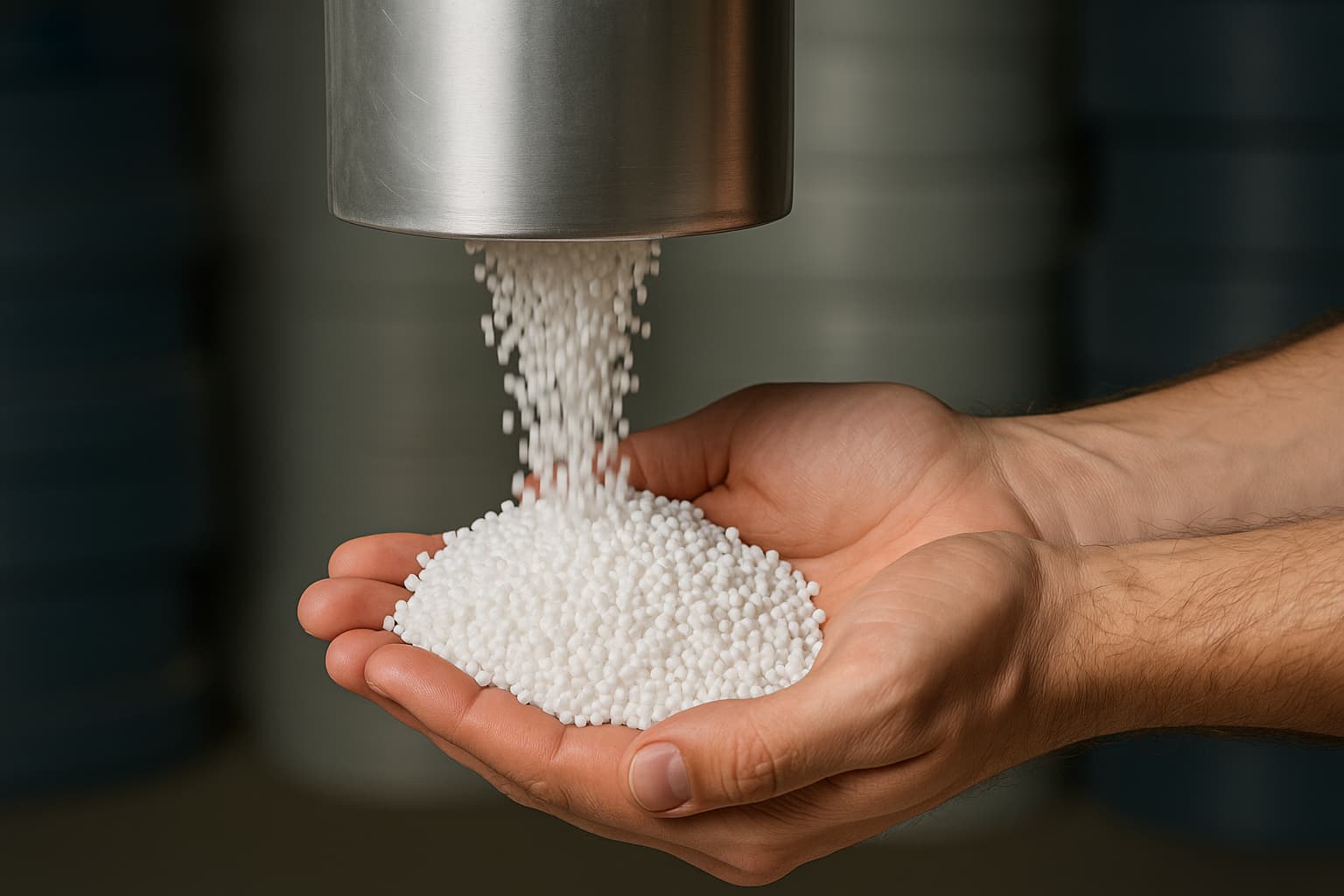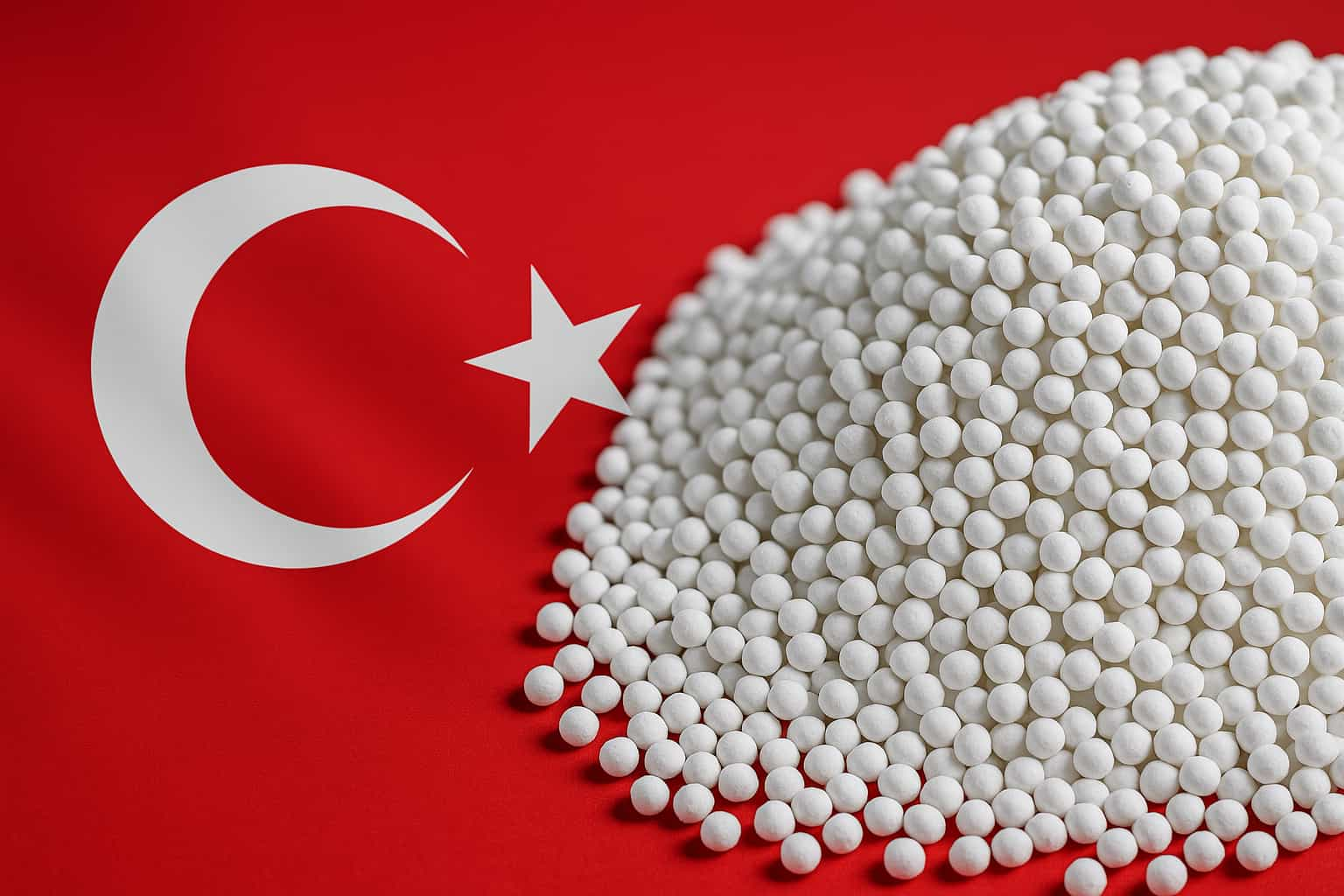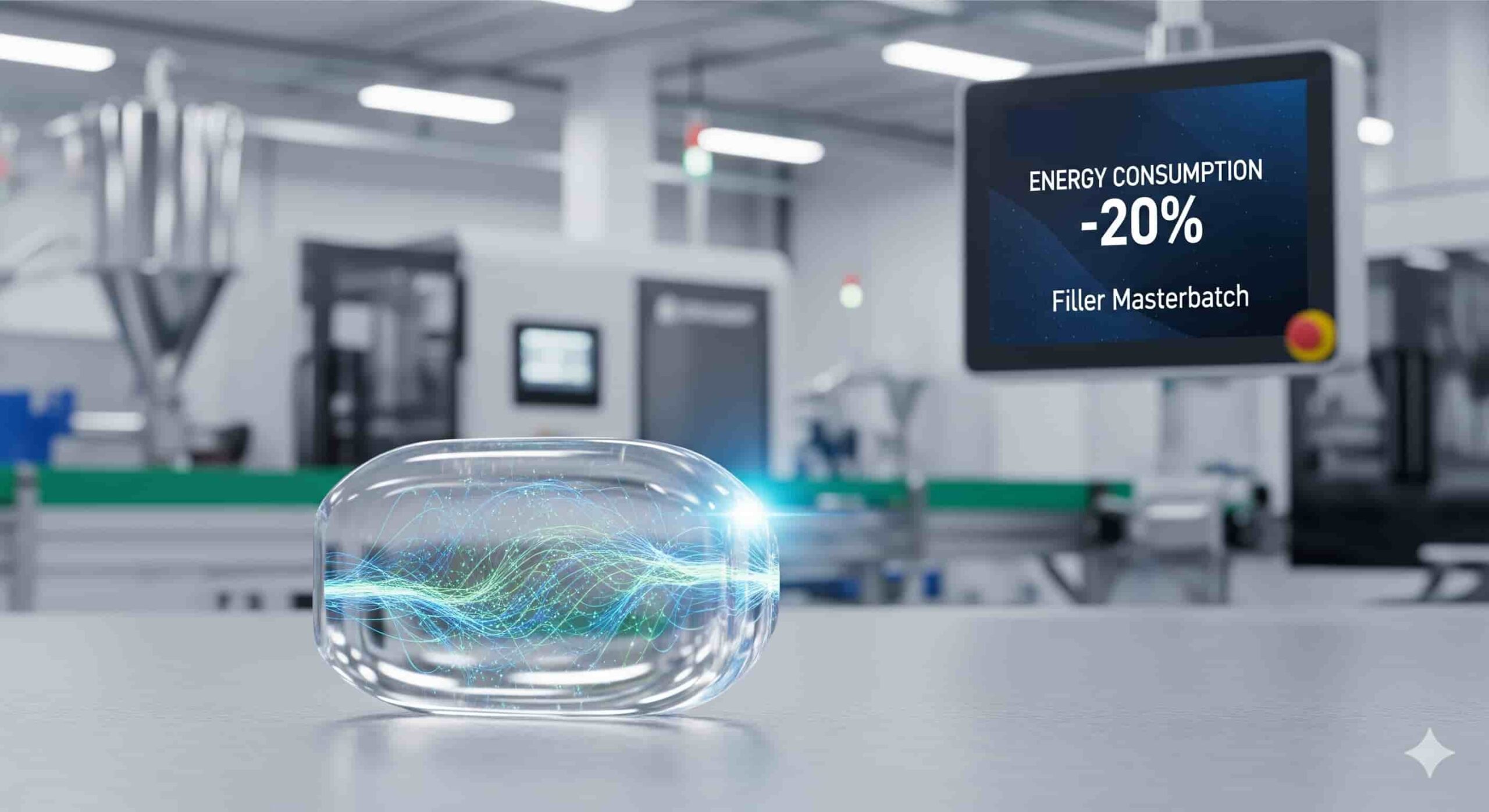In today’s plastics industry, plastic injection molding manufacturers are constantly looking for ways to reduce production costs while maintaining product quality. One of the most effective solutions? Filler masterbatch for injection molding.
By blending mineral fillers—most commonly calcium carbonate (CaCO₃)—into a polymer carrier like PE or PP, filler masterbatches allow producers to replace a portion of expensive virgin resin. The result is not just lower material costs, but also enhanced properties like improved rigidity, faster cooling, and better dimensional stability.
Whether you’re molding automotive parts, packaging components, or everyday consumer goods, using the right filler masterbatch can transform your process efficiency—and your bottom line.

1. How Filler Masterbatch Integrates into the Injection Molding Process?
Injection molding is one of the most common methods for producing plastic parts. It’s fast, scalable, and ideal for creating precise shapes. But when you introduce filler masterbatch into this process, the game changes.
Let’s break it down step by step — and see where filler masterbatch makes an impact:
🟢 Filling
Molten plastic, blended with filler masterbatch, is injected into a mold cavity. This filler doesn’t just bulk up the plastic — it also improves the flow of the material. That means fewer defects, better mold coverage, and smoother surfaces.
🟢 Packing
Here, pressure is applied to ensure the material fills every tiny corner of the mold. Filler masterbatch helps by reducing shrinkage, especially in large or thick-walled parts. That’s because minerals like CaCO₃ don’t shrink the way pure resin does.
🟢 Cooling
Cooling is where manufacturers can lose the most time. But filler particles conduct heat better than polymer alone. This results in faster cooling — which can shave seconds off each cycle and reduce energy consumption.
🟢 Ejection
Once the plastic has set, the mold opens and the part is ejected. Thanks to the improved dimensional stability that filler masterbatch provides, parts are less likely to warp or stick during ejection.

2. Types of Filler Masterbatch for Injection Molding
Filler masterbatches come in different types, depending on the polymer carrier and the filler material inside. Choosing the right one depends on what you’re molding, what properties you need, and what your production setup looks like.
Here are the two most commonly used types for injection molding:
2.1. PE-Based Filler Masterbatch (Polyethylene)
PE filler masterbatch uses polyethylene as the carrier resin and usually contains calcium carbonate (CaCO₃) as the main filler.
PE filler masterbatch is best suited for general-purpose applications like:
-
Caps and closures
-
Thin-walled containers
-
Household items
-
Simple technical parts
It helps reduce raw material costs and improve the rigidity of the final product without making major changes to your injection molding process. It’s a great cost-saving option for non-critical parts.
2.2. PP-Based Filler Masterbatch (Polypropylene)
PP filler masterbatch uses polypropylene as the base resin and is also filled with minerals like CaCO₃ or talc.
It’s ideal for products that need to be:
-
Strong and durable
-
Heat-resistant
-
Dimensionally stable
Common applications include:
-
Automotive plastic parts
-
Packaging for hot-fill products
-
Electrical housings
-
Industrial components
If your parts need to hold their shape under stress or temperature, PP-based filler masterbatch is the better fit.

Pro tip:
Make sure your filler masterbatch is compatible with the base resin you’re using. Mismatched carriers can affect melt flow and bonding.
3. Performance Benefits of Using Filler Masterbatch in Injection Molding
Using filler masterbatch isn’t just about saving money—although that’s a big part of it. It also brings real improvements to how your plastic products perform and how smoothly your production line runs.
Let’s break down the key benefits:
Lower Material Costs
This is the most obvious benefit. Filler masterbatch replaces a portion of your virgin resin—often up to 30% or more—with low-cost minerals like calcium carbonate.
That means you spend less on raw materials without sacrificing the structure of your final product. Over time, that can make a serious difference to your bottom line.
Improved Stiffness and Dimensional Stability
Adding mineral fillers makes plastic stiffer and helps it hold its shape better after molding. This is especially useful for parts that need to be solid, rigid, or stackable.
If you’ve ever dealt with parts that shrink or warp after cooling, using a well-formulated filler masterbatch can help solve that.
Faster Cooling and Shorter Cycle Times
Minerals conduct heat better than pure plastic. When you use filler masterbatch, the molded part cools down faster—meaning the mold can open sooner and start the next cycle.
This leads to quicker production times, better machine utilization, and potentially lower energy bills.
Better Surface Quality (in the right doses)
When properly dispersed, filler masterbatch can improve surface finish by smoothing out the material flow. This is especially true with high-quality grades that are well-matched to your polymer.
It also supports better paint or print adhesion, which is useful if you’re decorating or branding the final product.
Less Warpage and Shrinkage
Filler masterbatch reduces shrinkage rates, helping your parts maintain consistent dimensions even after cooling. This means fewer rejections, less post-processing, and happier clients.
Environmental Impact
By cutting down on virgin resin use, you’re also reducing fossil resource consumption. Some manufacturers even combine filler masterbatch with recycled resin for an even lower carbon footprint.
4. How to Use Filler Masterbatch Effectively in Injection Molding
Using filler masterbatch the right way can make a big difference. It helps you get all the cost and performance benefits—without running into quality issues or production delays.
Here’s what you need to know to make it work smoothly:
Start with the Right Dosage
The recommended dosage depends on the application and the masterbatch formulation. In injection molding, most manufacturers use filler masterbatch at 10–30% of the total mix.
-
For general parts: 10–15% is often enough
-
For rigid parts or cost-saving focus: you can go up to 30%
But don’t just guess. Always test with small batches first to find the sweet spot between savings and performance.
Pre-mix Thoroughly
Uniform mixing is key. If the filler masterbatch isn’t evenly distributed, you’ll end up with poor dispersion, visible streaks, or uneven product properties.
You can:
-
Pre-blend it manually or in a mixer
-
Use gravimetric feeders for more accuracy on larger lines
Good dispersion = better strength, surface, and consistency.
Watch Out for Moisture
Filler masterbatch, especially those with high calcium carbonate content, can absorb moisture if stored improperly.
Moisture can cause:
-
Surface defects
-
Voids or bubbles
-
Poor flow in the mold
To avoid this, store in a dry place and pre-dry the masterbatch if needed—especially during humid seasons.
Adjust Your Machine Settings
When you add filler masterbatch, your melt flow behavior might change slightly. You may need to tweak a few parameters, such as:
-
Back pressure
-
Barrel temperature (sometimes slightly lower with filler)
-
Injection speed or holding pressure
Don’t worry—it usually doesn’t require major changes. But small adjustments can help optimize results.
Monitor Results and Optimize Over Time
After your first production runs, take a close look at:
-
Cycle time
-
Part strength and finish
-
Any processing issues
Then, make adjustments gradually. Every machine and mold setup is a little different—so dial it in for your best output.
Pro Tip:
Work with a trusted supplier who can help you choose the right grade and offer tech support. That alone can save you a lot of trial-and-error time.
5. Real-World Applications of Filler Masterbatch in Injection Molding
Filler masterbatch isn’t just a behind-the-scenes additive. It plays an active role in shaping the performance and profitability of plastic products across many industries.
Let’s look at how it’s actually used in the real world.
Automotive Parts
In the automotive sector, filler masterbatch is used to produce parts like:
-
Interior panels
-
Battery covers
-
Trim components
-
Plastic fasteners
Why it’s useful? It enhances rigidity, keeps dimensions stable under heat, and cuts down on raw material costs—all without sacrificing quality.
Household Appliances
For items like washing machine components, air conditioner casings, or vacuum cleaner parts, strength and thermal resistance are essential.
Filler masterbatch helps:
-
Improve stiffness
-
Prevent shrinkage or warping
-
Maintain smooth surfaces for aesthetic parts
It’s a practical way to keep plastic parts strong and budget-friendly in large-scale appliance production.
Rigid Packaging
Caps, closures, containers, and technical packaging benefit a lot from filler masterbatch.
It improves:
-
Stackability
-
Wall thickness consistency
-
Impact resistance (especially when balanced with other additives)
The ability to save material while maintaining structural integrity is key in packaging lines where volume and speed matter.
Furniture and Home Goods
Injection-molded parts in plastic furniture—like chair backs, arms, or structural support parts—often use filler masterbatch to reduce cost and enhance strength.
In these applications, the goal is to keep weight low but still meet durability standards.
Electrical and Electronic Housings
For switch casings, cable management parts, and small electronics, filler masterbatch helps maintain shape and structure over time, especially in warmer environments.
6. How to Choose the Right Filler Masterbatch for Your Injection Molding Needs
Not all filler masterbatches will work the same in every setup. Choosing the right one depends on more than just the price or filler content.
Here’s how to make the right decision for your production line.
6.1. Match the Carrier Resin to Your Base Material
This is rule number one.
-
If you’re using polypropylene (PP) in your molding line, use a PP-based filler masterbatch.
-
If your base is polyethylene (PE), choose a PE-based filler.
Mixing different carriers can lead to poor bonding, weak part strength, or inconsistent flow during molding.
6.2. Check the Filler Type and Loading Level
Most injection molding filler masterbatches use calcium carbonate (CaCO₃) as the filler. It’s affordable and widely compatible.
But what really matters is the filler content:
-
Lower filler content (20–40%) gives a better surface finish
-
Higher filler content (up to 70–85%) offers more cost savings and stiffness, but may reduce flexibility or flowability
Start with a mid-range option and adjust based on your product requirements.
6.3. Consider Your Product’s Performance Requirements
Ask yourself:
-
Does your product need to be rigid or flexible?
-
Will it be used in high-heat environments?
-
Is appearance (color, finish) a priority?
For high-performance applications, you may need a premium-grade filler masterbatch with better dispersion, tighter particle control, or added additives for UV or heat resistance.
6.4. Evaluate Melt Flow Index (MFI) Compatibility
Your filler masterbatch should match the melt flow rate of your base resin.
If your base PP has a high MFI (fast-flowing), adding a filler with low MFI may reduce flow and affect mold filling.
Check datasheets and ask your supplier for support on this. MFI matching can save you a lot of headaches on the machine floor.
Read more: Melt Flow Index of Polymers with Comprehensive MFI Table
6.5. Look for Proven Quality and Technical Support
Don’t go for the cheapest option blindly. Choose a supplier that offers:
-
Consistent quality between batches
-
Clear technical data
-
Fast support when you need help adjusting parameters
This becomes especially important if you’re exporting products or working under tight quality control.
Pro tip:
Run a small trial batch before switching to any new filler masterbatch. Monitor cycle time, part appearance, and reject rate to confirm compatibility.
7. Common Mistakes to Avoid When Using Filler Masterbatch
Filler masterbatch can bring big benefits—but only when it’s used correctly. Many manufacturers, especially those new to it, fall into avoidable traps that cost time, money, or even damage to equipment.
Here are some of the most common mistakes to watch out for—and how to steer clear of them:
7.1. Using the Wrong Carrier Resin
This is a big one. Mixing a PP filler masterbatch into PE resin, or vice versa, usually leads to poor dispersion, weak bonding, and brittle parts.
✅ Always match the masterbatch carrier to your base resin.
7.2. Overdosing the Filler Masterbatch
It might be tempting to add more filler to save more money. But pushing the dosage too high—especially beyond 30%—can:
-
Weaken impact strength
-
Cause flow problems
-
Leave visible surface marks
✅ Stick to the dosage recommended by your supplier, and test before scaling up.
7.3. Ignoring Moisture Content
Some filler masterbatches absorb moisture during storage, especially in humid conditions. If not dried properly before processing, this can cause:
-
Bubbles
-
Voids
-
Poor molding consistency
✅ Keep bags sealed and dry. If needed, pre-dry before use—especially during rainy or humid seasons.
7.4. Poor Mixing
If the masterbatch isn’t evenly mixed with your base resin, the final part may have inconsistent properties or appearance. You may also notice streaks, lumps, or weak spots.
✅ Use a proper mixer or feeding system to ensure even dispersion.
7.5. Not Adjusting Machine Settings
Adding filler changes the flow and cooling characteristics of the material. Some manufacturers forget to adjust:
-
Barrel temperature
-
Injection speed
-
Back pressure
-
Cooling time
✅ Monitor your machine closely during the first runs and tweak parameters as needed.
7.6. Skipping Performance Checks
Some companies swap out resin for filler masterbatch and go straight into full production—only to find their product fails stress or impact tests.
✅ Always run a small trial batch, and test the final product for strength, finish, and durability.
Avoiding these mistakes doesn’t take much effort—but it makes a big difference in how effective and hassle-free your production will be.
8. Why Choose EuP Egypt as Your Filler Masterbatch Partner
When it comes to injection molding, choosing the right filler masterbatch is only half the equation. The other half is partnering with a supplier who understands your needs—and can deliver consistent, high-quality solutions at scale.
That’s where EuP Egypt comes in.
✅ A Global Leader in Filler Masterbatch
With over 17 years of experience in the plastics industry, EuP has become one of the world’s largest filler masterbatch producers, trusted by manufacturers across more than 95 countries.
Whether you’re producing automotive parts, caps, rigid packaging, or consumer goods, our solutions are tailored to your real-world challenges.

✅ Reliable Quality, Batch After Batch
All of our filler masterbatch products are:
-
Backed by strict quality control
-
Engineered for excellent dispersion and processing
-
Produced at scale, thanks to our large factory in Egypt with an annual capacity of 300,000 tons
This means you get performance you can count on—every time.

✅ Cost Efficiency Without Compromise
Our formulations are designed not just to reduce costs, but to:
-
Maintain mechanical strength
-
Improve cycle time
-
Enhance overall moldability
We help you cut material costs without cutting corners on product quality.
✅ Certified and Export-Ready
EuP Egypt products meet international standards, including: ISO, REACH, ROHS, OK Compost. We’re ready to support both domestic and export-focused manufacturers with documents, logistics, and technical support.
✅ Local Production, Global Reach
With our strategic location and strong logistics network, we provide:
-
Faster delivery times
-
Lower shipping costs to Africa, the Middle East, and Europe
-
Flexible MOQ options for growing businesses
Wherever you’re located, EuP Egypt can meet your needs—on time, and on budget.
Need expert support or a custom quote?
We’re more than just a supplier—we’re a solution partner.
📩 Contact us today to find the best filler masterbatch for your injection molding process.
9. Conclusion
Filler masterbatches are indispensable in the plastic industry, especially filler masterbatches for injection molding, where they significantly enhance the quality and performance of the final products. PE & PP filler masterbatches each offer unique properties and advantages, catering to various industrial needs and sustainability goals.
By incorporating these filler masterbatches, manufacturers can optimize their production processes, reduce costs, and produce high-quality, durable, and eco-friendly plastic products. As the demand for sustainable and efficient manufacturing practices grows, the role of advanced filler masterbatches in injection molding will continue to be crucial in shaping the future of the plastic industry.






